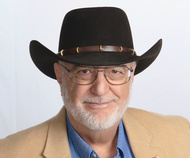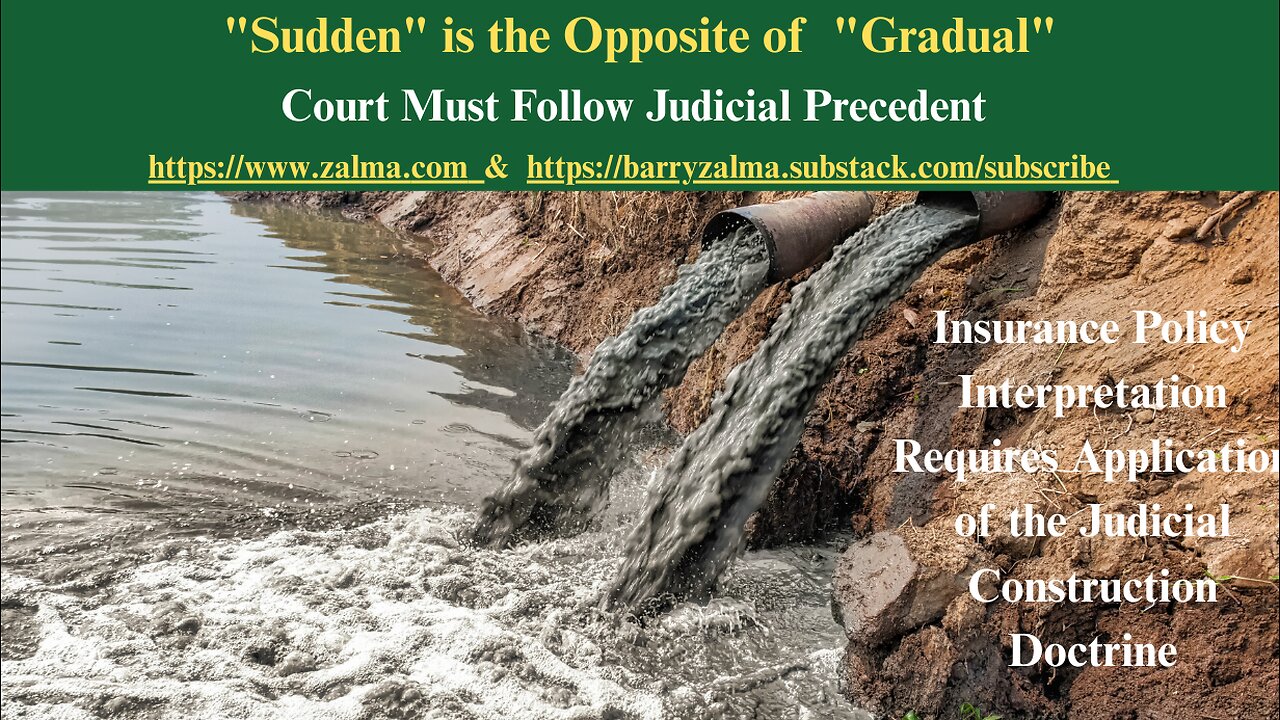
Attempt at Insurance Fraud Fails
See the full video at https://lnkd.in/gp45YiFc and at https://lnkd.in/gEknRCgC, and at https://zalma.com/blog plus more than 5100 posts.
Post 5112
The following is a fictionalized True Crime Story from my experience of Insurance Fraud. This story explains why insurance fraud is a “Heads I Win, Tails You Lose” situation for insurers and those insured. The story is presented to help you to understand how insurance fraud in America is costing everyone who buys insurance.
Arson on Independence Day Resulted in Prison for the Arsonist
The insured had no respect for his insurance company. He expected them to pay any claim he presented. He expected no investigation. Other members of the same immigrant community had successfully committed arson fraud. It was so easy for others. He decided to burn his house down.
The insured thought he was highly intelligent. He planned his arson fire carefully. He arranged for his wife and children to spend the weekend with their cousins in Oakland. He got four one-gallon cans of gasoline from four different gas stations over a two-week period. He stored the gasoline in his garage. He told his wife and children that he would join them Sunday because he had work to do Saturday in his business. After driving the wife and children to their cousins’ home in Oakland, he returned to his home in San Francisco Friday night.
Early Saturday morning July 3, the day before Independence Day, he began the preparations for the fire. He removed all of the valuable contents of the house and stored them in a rented storage facility. He packed up all of his good clothing in a suitcase and put them in the trunk of his automobile. He checked the neighborhood and found a house for rent in his general neighborhood similar to the house he lived in. He made arrangements with the owner and signed a month-to-month lease on the house. He did not notice that the owner recorded the date and time the lease was signed.
The insured spoke on the telephone with three of his customers. He visited one to show that he had, in fact, worked in his business of selling imported bathing suits that day. He then waited for the sun to set.
After it was completely dark, the insured removed one of the gasoline cans from the garage and spread the gasoline carefully throughout his living room and dining room. He returned to the garage, deposited the empty can in its hiding place, and removed two more cans. He spread them in two bedrooms and the kitchen. He made certain, while he was spreading the gasoline that the windows and doors of the house remained open to keep enough oxygen for the fire to spread. He did not turn on any lights for fear of a spark. He had turned off the pilot light on all the gas appliances. He spread the last can of gasoline around the front entry, the den, and the two bathrooms as the Fireworks shows began with bright explosions over the San Francisco Bay.
The insured did not notice that as he poured the gasoline, small droplets splashed on his shirt.
He made a final walk through the house to satisfy himself that he had spread the gasoline everywhere. There was nothing of value remaining in the house. He stood at his rear entrance and rolled up a newspaper. He lit the newspaper with his cigarette lighter and threw it into the kitchen. The gasoline had been in the kitchen for a considerable time and the fumes ignited almost instantaneously throughout the house. The flash of flames brushed the insured and ignited his gasoline-splashed shirt. He ran from the scene ripping his shirt off his body. He suffered only minor burns to his chest and back. Half naked, he ran down the street in the dark to a nearby BART station where he caught a train to Oakland. He spent the evening with his family.
The next morning, he called the San Francisco Fire Department. He told the investigator that he had chased the arsonist out of his house all the way to Montgomery Street, only to lose him at a BART station. He explained that because he was exhausted, burned and half naked, he decided to go to his cousin’s home and spend a quiet night before calling the fire department.
The insured reported the fire to his insurer the next day. He reported that the fire gutted his house. He told them he had placed his family in a rental house. He demanded an advance payment to cover the expense of the rental house.
The insured had moved his family into the rental dwelling, knowing that his policy provided coverage for additional living expenses. It was at the new rental dwelling that he first met with the adjuster.
The insured told the adjuster:
"I came home after a late dinner to find my front door open. I believed that a burglary had occurred. I was not afraid since I had served in the Soviet army in Afghanistan before coming to the United States. I walked quietly into my dark house. I could see that my television set and stereos were missing and heard someone in one of the back bedrooms. I approached the bedroom as quietly as possible. As I was about to see the burglar, they splashed me with something that smelled like gasoline. A dark figure ran past me and I chased him down the hallway. As he was leaving out my back door, he threw a match and the kitchen burst into flames. My shirt caught fire where he had splashed me and I ripped it off. Half-naked I kept running after him down the street and into the city. I chased him for at least ten blocks but he outran me. I never got a good look at him. He was about 6’2” tall, thin and I think black. My chest was burned, I was half naked and I knew my house was in flames. There was nothing I could do. I saw a BART station nearby and I bought a token and took the train to my cousin’s home in Oakland. My cousin’s house is only two blocks from the station. I spent the night with my family there.
"When I returned to San Francisco, we found the house destroyed. I rented this house so my family would have a place to sleep."
The adjuster empathized with the insured. He made clear to the insured that the policy covered additional living expenses and advances would be made as soon as possible. The adjuster promised to start his investigation immediately. He asked for documents to support the claim for additional living expenses, including the lease agreement signed by the insured.
The San Francisco Arson Unit investigated the fire. It found the fire to be clearly an arson fire. The arson unit assumed the fire was set to cover a burglary. They believed the insured’s story about confronting and chasing the robber. There was no question that the insured was burned as a result of the fire.
The insured claimed, among other things, that he had lost in the fire over 400 bathing suits and 600 pairs of pajamas. He informed the adjuster that the bathing suits and pajamas had been part of the inventory of a business that he had closed down months before and that they were no longer for sale. He said they were used by his family and friends. He had already researched the chance that the insurer would refuse coverage for these items if they were business personal property. He made it clear to the adjuster that they were not business property.
The adjuster was suspicious of this claim. He initially accepted the insured’s word. He found it necessary, however, to complete the thorough investigation required by the California Fair Claims Settlement Practices Regulations to obtain evidence that the insured’s claims were correct and supported by substantial evidence.
His first interview, therefore, was with the landlord of the replacement dwelling. The landlord showed him the original lease which, unlike the copy in the hands of the insured, noted that he signed it at 11:30 a.m. on the Saturday before the fire. The adjuster questioned the landlord carefully in that regard since the fire was reported to have occurred at 10:12 p.m. the same night, or eleven hours after the insured signed the lease for the replacement house.
The landlord was adamant. He was a meticulous bookkeeper and always wrote down the date and time each lease is signed. He also remembered that the insured told him that he needed the house, furnished because it was a replacement for his house which burned in a fire. From that point on the truth was easy for the insurance adjuster and the insurer’s Special Investigative Unit to prove.
The insurer, as required by the California Insurance Code, reported its findings to the local fire arson investigators and provided them with copies of the lease and the statement obtained from the landlord. The fire investigators arrested the insured. He was tried and convicted of arson and insurance fraud. The court sentenced the insured to six years in state prison.
The insured was not arrested because of brilliant investigation or police work. He was arrested because he had so little respect for the insurer and the police that he covered no trails. He told a story that was almost impossible to believe after contact with the lessor. He rented a house to replace his burned out house before the fire.
From his own statements and actions, he established motive, opportunity, ability and premeditation.
He was so stupid in perpetrating this crime that even a novice adjuster who did the minimum investigation discovered the crime. The insurer celebrated the American judiciary that provided it and the insured with the justice they both deserved.
Adapted from my book Insurance Fraud Costs Everyone Available as a Kindle Book and Available at https://www.amazon.com/gp/product/B08QG3MYCR?pf_rd_r=845HWBP1C0XK5A3GZ6BQ&pf_rd_p=9d9090dd-8b99-4ac3-b4a9-90a1db2ef53b&pd_rd_r=787f0f76-2377-4ad2-9d91-df3dbda2a0e7&pd_rd_w=R9LjE&pd_rd_wg=QXi9P&ref_=pd_gw_unk
(c) 2025 Barry Zalma & ClaimSchool, Inc.
Please tell your friends and colleagues about this blog and the videos and let them subscribe to the blog and the videos.
Subscribe to my substack at https://barryzalma.substack.com/subscribe
Go to X @bzalma; Go to Barry Zalma videos at Rumble.com at https://rumble.com/account/content?type=all; Go to Barry Zalma on YouTube- https://www.youtube.com/channel/UCysiZklEtxZsSF9DfC0Expg; Go to the Insurance Claims Library – https://lnkd.in/gwEYk
Montana County Attorney Admits to Insurance Fraud & Is Only Suspended from Practice for 60 Days
Post 5251
Read the full article at https://lnkd.in/gnBaCjmv, see the video at https://lnkd.in/gfpVsyAd and at https://lnkd.in/gC73Nd8z, and at https://zalma.com/blog plus more than 5250 posts.
A Lawyer Who Commits Insurance Fraud and Pleas to a Lower Charge Only Suspended
In The Matter Of: Naomi R. Leisz, Attorney at Law, No. PR 25-0150, Supreme Court of Montana (December 23, 2025) the Montana Office of Disciplinary Counsel (ODC) filed a formal disciplinary complaint with the Commission on Practice (Commission) against Montana attorney Naomi R. Leisz.
On September 25, 2025, Leisz tendered a conditional admission and affidavit of consent. Leisz acknowledged the material facts of the complaint were true and she had violated the Montana Rules of Professional Conduct as alleged by ODC.
ADMISSIONS
Leisz admitted that in April 2022, her minor son was involved in a car accident in which he hit a power pole. Leisz’s son ...
Montana County Attorney Admits to Insurance Fraud & Is Only Suspended from Practice for 60 Days
Post 5251
Read the full article at https://lnkd.in/gnBaCjmv, see the video at https://lnkd.in/gfpVsyAd and at https://lnkd.in/gC73Nd8z, and at https://zalma.com/blog plus more than 5250 posts.
A Lawyer Who Commits Insurance Fraud and Pleas to a Lower Charge Only Suspended
In The Matter Of: Naomi R. Leisz, Attorney at Law, No. PR 25-0150, Supreme Court of Montana (December 23, 2025) the Montana Office of Disciplinary Counsel (ODC) filed a formal disciplinary complaint with the Commission on Practice (Commission) against Montana attorney Naomi R. Leisz.
On September 25, 2025, Leisz tendered a conditional admission and affidavit of consent. Leisz acknowledged the material facts of the complaint were true and she had violated the Montana Rules of Professional Conduct as alleged by ODC.
ADMISSIONS
Leisz admitted that in April 2022, her minor son was involved in a car accident in which he hit a power pole. Leisz’s son ...
Insurer’s Exclusion for Claims of Assault & Battery is Effective
Post 5250
Read the full article at https://lnkd.in/gBzt2vw9, see the video at https://lnkd.in/gEBBE-e6 and at https://lnkd.in/gk7EcVn9, and at https://zalma.com/blog plus more than 5250 posts.
Bar Fight With Security is an Excluded Assault & Battery
In The Cincinnati Specialty Underwriters Insurance Company v. Mainline Private Security, LLC, et al., Civil Action No. 24-3871, United States District Court, E.D. Pennsylvania (December 16, 2025) two violent attacks occurred in Philadelphia involving young men, Eric Pope (who died) and Rishabh Abhyankar (who suffered catastrophic injuries). Both incidents involved security guards provided by Mainline Private Security, LLC (“Mainline”) at local bars. The estates of the victims sued the attackers, the bars, and Mainline for negligence and assault/battery. The insurer exhausted a special limit and then denied defense or indemnity to Mainline Private Security.
INSURANCE COVERAGE
Mainline had purchased a commercial ...
Court Must Follow Judicial Precedent
Post 5252
Read the full article at https://www.linkedin.com/pulse/sudden-opposite-gradual-barry-zalma-esq-cfe-h7qmc, see the video at and at and at https://zalma.com/blog plus more than 5250 posts.
Insurance Policy Interpretation Requires Application of the Judicial Construction Doctrine
In Montrose Chemical Corporation Of California v. The Superior Court Of Los Angeles County, Canadian Universal Insurance Company, Inc., et al., B335073, Court of Appeal, 337 Cal.Rptr.3d 222 (9/30/2025) the Court of Appeal refused to allow extrinsic evidence to interpret the word “sudden” in qualified pollution exclusions (QPEs) as including gradual but unexpected pollution. The court held that, under controlling California appellate precedent, the term “sudden” in these standard-form exclusions unambiguously includes a temporal element (abruptness) and cannot reasonably be construed to mean ...


Lack of Jurisdiction Defeats Suit for Defamation
Post 5250
Posted on December 29, 2025 by Barry Zalma
See the video at and at
He Who Represents Himself in a Lawsuit has a Fool for a Client
In Pankaj Merchia v. United Healthcare Services, Inc., Civil Action No. 24-2700 (RC), United States District Court, District of Columbia (December 22, 2025)
FACTUAL BACKGROUND
Parties & Claims:
The plaintiff, Pankaj Merchia, is a physician, scientist, engineer, and entrepreneur, proceeding pro se. Merchia sued United Healthcare Services, Inc., a Minnesota-based medical insurance company, for defamation and related claims. The core allegation is that United Healthcare falsely accused Merchia of healthcare fraud, which led to his indictment and arrest in Massachusetts, causing reputational and business harm in the District of Columbia and nationwide.
Underlying Events:
The alleged defamation occurred when United ...


Zalma’s Insurance Fraud Letter
Read the full article at https://lnkd.in/dG829BF6; see the video at https://lnkd.in/dyCggZMZ and at https://lnkd.in/d6a9QdDd.
ZIFL Volume 29, Issue 24
Subscribe to the e-mail Version of ZIFL, it’s Free! https://visitor.r20.constantcontact.com/manage/optin?v=001Gb86hroKqEYVdo-PWnMUkcitKvwMc3HNWiyrn6jw8ERzpnmgU_oNjTrm1U1YGZ7_ay4AZ7_mCLQBKsXokYWFyD_Xo_zMFYUMovVTCgTAs7liC1eR4LsDBrk2zBNDMBPp7Bq0VeAA-SNvk6xgrgl8dNR0BjCMTm_gE7bAycDEHwRXFAoyVjSABkXPPaG2Jb3SEvkeZXRXPDs%3D
Zalma’s Insurance Fraud Letter (ZIFL) continues its 29th year of publication dedicated to those involved in reducing the effect of insurance fraud. ZIFL is published 24 times a year by ClaimSchool and is written by Barry Zalma. It is provided FREE to anyone who visits the site at http://zalma.com/zalmas-insurance-fraud-letter-2/
Zalma’s Insurance Fraud Letter
Merry Christmas & Happy Hannukah
Read the following Articles from the December 15, 2025 issue:
Read the full 19 page issue of ZIFL at ...












